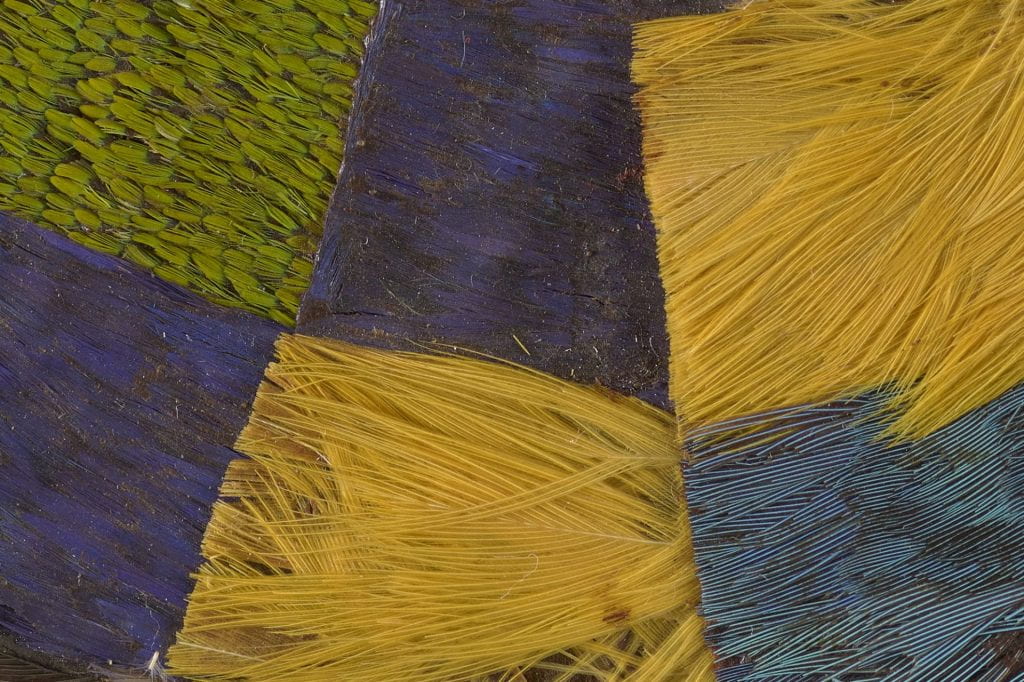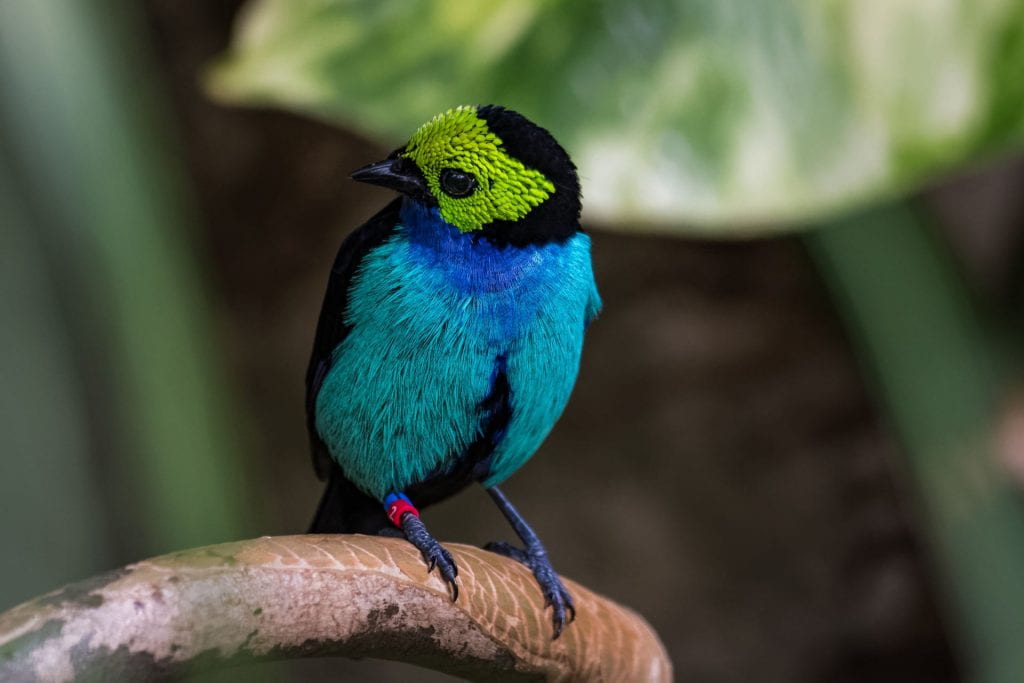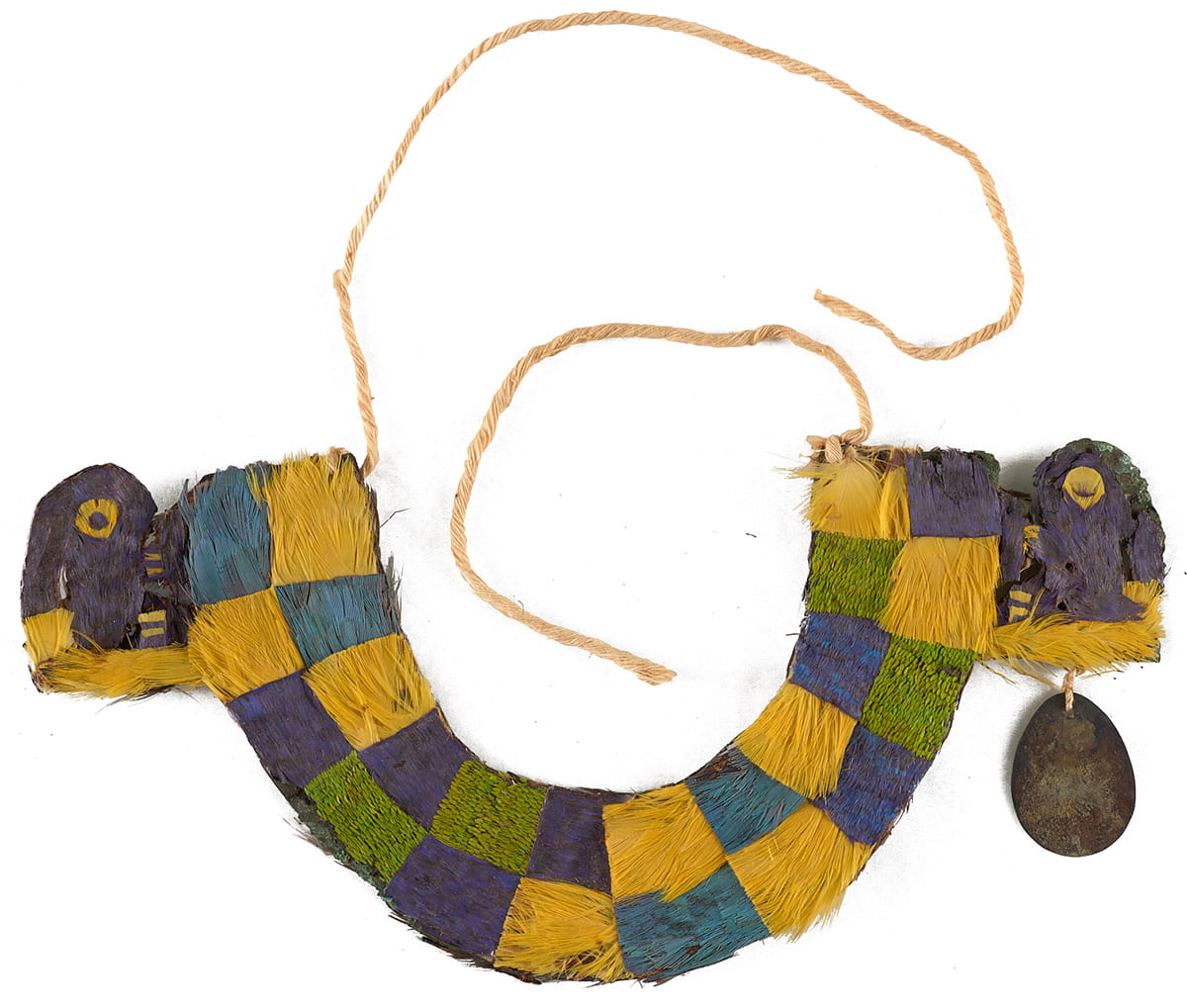The Chimu (Chimor) Kingdom flourished along Peru’s north coast from around 1250 until the Inca conquest in 1450. It was ruled by ten successive kings, who governed from the imperial capital of Chanchan. As many as 50,000 people lived in this vast adobe city, including thousands of metalworkers, weavers and other skilled artisans.
Chimu craftsmen made intricate bracelets, cups, crowns and other objects in bronze, copper, gold and silver. Textiles were made from locally grown cotton, which is drought-and insect-resistant and grows naturally in a number of different colors, from white to dark brown. The Chimu were also renowned for their featherwork.

This Chimu necklace was constructed from a silver sheet base covered on both sides with the feathers of blue-and-yellow macaws (dark blue and yellow), paradise tanagers (chartreuse and turquoise) and other birds. A matching crown — also in The Textile Museum Collection — completes this ceremonial ensemble.
The feathers were likely collected from birds in the Amazon rainforest, and then brought up and over the Andes Mountains, and back into Chanchan, by a network of traders. The Chimu may also have kept captive macaws for their featherwork.


